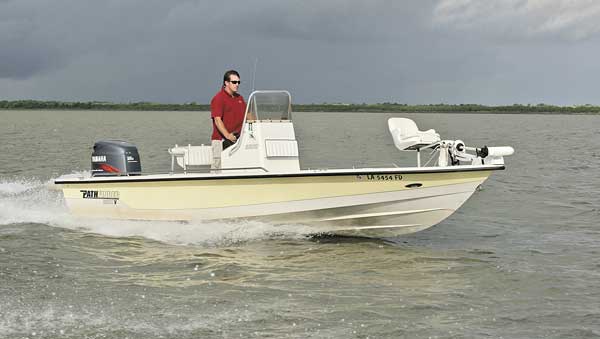
The Louisiana state fish is something special.
I recently received an e-mail from a reader asking if I could help identify which wire is the ignition wire for his 1999 outboard motor. He stated that he was considering hooking up an onboard DC alternator charger. The power for this unit is supposed to be supplied by the motor’s ignition wire so that the charger is turned on whenever the key is on.
He supplied me with the model number of this charger and a web site address so that I could see what he was attempting to hook up. This particular type of charger takes voltage from the engine’s alternator and directs it to the trolling-motor batteries so that in theory they will be recharged while the engine is running from one fishing hole to the next.
I explained to him that the wire he was searching for is actually an accessory power wire. His motor, just like most modern outboards, actually uses the alternator to generate the electricity for the ignition system so there is no actual ignition wire. There is, however, a 12-volt key-on power lead, usually purple in color. It comes out of the key switch and powers the instrument panel. This wire can be used to power the charger he was considering.
I also offered him a word of caution. As I had explained most outboard motors are equipped with ADI (alternator-driven ignition). Back in 1999 when his engine was built there were a lot of these ADI systems that failed. One of the possible explanations for those failures was that many boaters were installing systems that would allow the engine alternator to charge the trolling-motor batteries.
It seems that the charge systems on these motors was smart enough to sense a low battery condition and would attempt to charge those batteries, but in the process the stator (alternator) would overheat and self-destruct. When this happened, the engine not only would not recharge the batteries, but it would not generate any power for the ignition system, and the engine would not run.
I searched the website to see if this particular charger had any safeguards to protect against system overheat and failure, but they did not address the issue. I did notice something interesting on the web site. They specified that “dependent on alternator output” the charger would put out a 10-amp charge per each battery. They also showed a chart that rated battery recovery time. The example they gave was a battery that was 60-percent discharged would take 4 to 6 hours at 10-amp charge to be fully recharged. If the rate of charge were reduced to 5 or 6 amps, the recovery time would be 10 to 12 hours.
Let’s consider an average fishing trip. When we hook up our boat and head to the lake, our trolling-motor batteries are fully charged so the initial boat ride from the launch to the first fishing hole does not add more life to the batteries. We fish for one to two hours. We pick up the trolling-motor and crank up the outboard to run to our next spot. This may only take 15 to 20 minutes. We turn off the outboard and drop the trolling motor back in the water and begin fishing. This process is repeated several more times during the day.
At the end of the day when you add it all up, you will find that you may have spent eight or more hours on the water, but only about 25 percent of that time, or approximately two hours, was spent with the outboard motor running.
The numbers just do not add up. The short period of time that the engine is running compared to the longer period of time that the trolling motor is being used does not allow the charger to offer any significant charge to the batteries.
I would recommend that instead of spending your money on a DC alternator battery charger, you invest in good quality trolling-motor batteries and a reliable battery charger that you can plug into the electric outlet in your boat shed. Deep-cycle trolling-motor batteries are designed to be drawn down over several hours and then recharged. It is extremely important that you recharge the batteries as soon as you come home. If you let the batteries sit in a discharged state, they will eventually not accept a full charge, regardless of how long you leave the charger plugged in.
Regular maintenance for your trolling-motor batteries is also important. Keep the batteries clean of any dirt, oil or corrosion, especially around the positive and negative posts. Check the wing nuts regularly to be sure they are tight. Use a wrench to tighten the wing nuts. Your fingers are not strong enough to do the job properly. A loose connection can reduce the amperage flow to and from the batteries and thus shorten the number of fishing hours you can get from your batteries.
Spring and summer fishing time is here. Let’s get out on the water and have some fun. If you have any questions about your boat, motor or trailer, just send an e-mail to theboatdr@yahoo.com.


